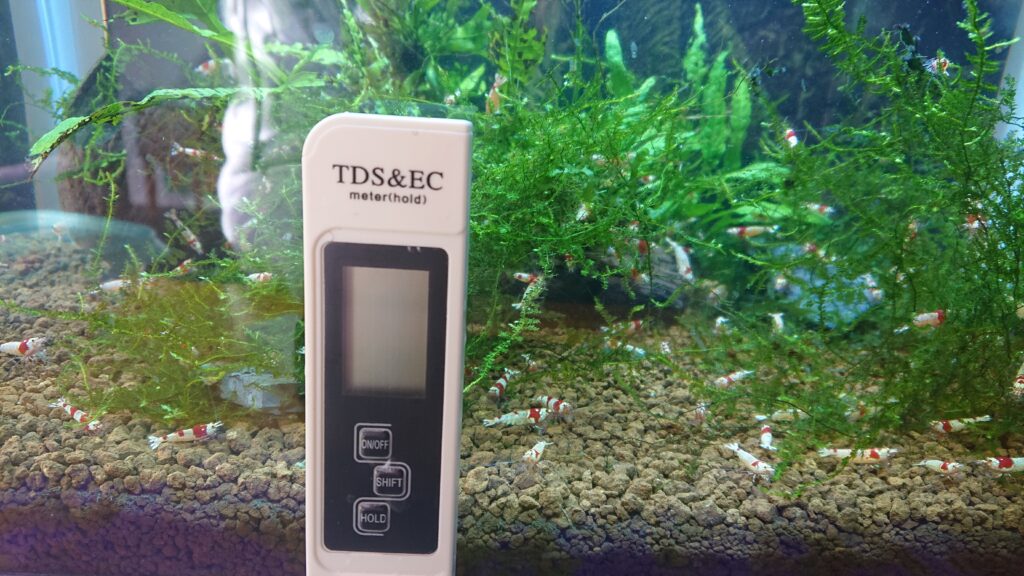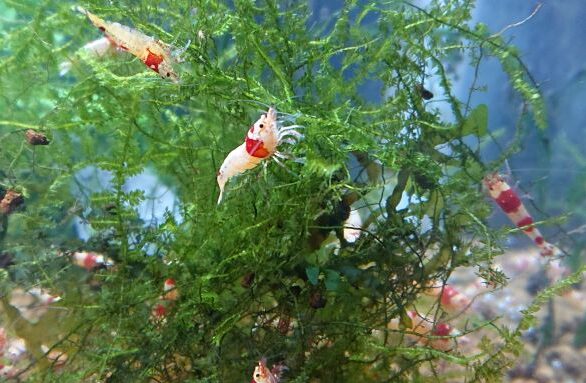Crystal Red shrimp are colorful invertebrates with sensitivity to poor water conditions. They’re like this due to selective breeding and, therefore, need water with a low hardness to thrive.
The Crystal Red shrimp can’t live in hard water. They’re not hardy shrimp and need special care. Crystal Red shrimp owners must perform 30% water changes weekly and ensure the tank is free of ammonia and nitrates.
Keep reading to learn how to care for and feed the Crystal Red shrimp. I’ll cover the habitat requirements and potential diseases and discuss the tank mates they can have.
Why Can’t Crystal Red Shrimp Live in Hard Water?
Crystal Red Shrimp can’t live in hard water because it has high mineral content that’s harmful to the shrimp. To ensure your Crystal Red shrimp can thrive, you must ensure the tank has zero ammonia levels. You must also ensure the nitrites are always 0 ppm.

Where Did the Crystal Red Shrimp Originate?
The Crystal Red shrimp originated from a freshwater species of dwarf bee shrimp. Colored red and white like a candy cane, this shrimp came from a mutation of the wild-caught bee shrimp, which are black and white.
They come from a specialized breeding process of various red bee shrimps. Crystal Red shrimp only exist in tanks and never in the wild.
The Ideal Crystal Red Shrimp Habitat
Raising Crystal Red shrimp is a hobby best suited to those with experience raising shrimp due to their difficult breeding and fragile nature. Unideal water conditions can stress out these shrimp. You’ll know your shrimps are stressed out when they stop moving around and being active.
Ensure the Tank Has Enough Water and the Right Water Temperature
Crystal Red shrimp breeders keep the water temperature around 72–78°F. They need at least a 10-gallon tank with well-oxygenated water. While an air pump is too strong for these shrimp, air stones provide the perfect oxygenation with minimal disruption to the water.
Make Sure the Water Is Not Too Acidic
To optimize the health and hatching rate of the Crystal Red shrimp, you should keep the water mildly acidic. Keep the acidity between 6.2 and 7.2. Many breeders use natural buffers of specific plants to stabilize the pH while not clouding the water. Maintain water hardness at around 7 with total dissolved solids at 200 ppm.
Watch Your Tank’s Ammonia Levels
After water cycling, make sure the ammonia level is at 0 since Crystal Red shrimp are very sensitive to ammonia. Ammonia gets into the gills, causes bacterial infections and low appetite, and affects organs. Regular ammonia testing will help you maintain the proper levels.
Remove Anything Decayed From the Tank
Nitrites are also deadly to Crystal Red shrimp. That said, you must keep their levels at 0 ppm. If you experience difficulty with nitrate levels rising, remove any decayed material and add more ADA Amazonia for freshwater aquascaping.
Another helpful product that immediately reduces nitrites is Genchem Biozyme (from Amazon.com) that supplies food and improves water quality. This product is especially great if you also have baby shrimp in the tank.
Ensure the Nitrate Level Is Not Above 0
After water cycling, ensure nitrates levels are at 0 ppm. Even minute levels of nitrates can harm Crystal Red shrimp. You will see signs of stress in the shrimp, including reduced feeding rates, mortality, reduced hatching success, and other indicators when the nitrates level is above 0.
Change 30% of the Water Every Week
Cycle out 30% of the water each week. This water cycling replenishes the minerals in the tank, reduces nitrites, and protects the shrimp from too much disruption. Water cycling is essential for removing excess waste buildup and preventing sudden changes in water conditions within the tank.
Give Crystal Red Shrimp a Specialized Diet
Special care and feeding are necessary for these shrimp to thrive and birth young. They need a specialized diet to meet their omnivorous needs. Feed your shrimp with the following:
- Dennerle Shrimp King, a popular food choice as they’re a combination of vegetables and calcium.
- Spirulina flakes
- Cooked zucchini
- Cooked spinach
- Algae discs

Things To Remember About Crystal Red Shrimp
When keeping Crystal Red shrimp, there are some things you should know. One is that they don’t live well with other shrimp, and breeding them can be quite tricky. To breed them successfully, you must prepare their habitat carefully and breed them with high-quality shrimp.
They Don’t Get Along With Other Shrimp
Because these shrimp are delicate, they don’t live well with other shrimp. The Crystal Red shrimp is expensive and reproduces slowly, so risking their habitat makes no sense. They need plenty of space to swim and hide in the plants.
Breeding Crystal Red Shrimp Can Be Quite Tricky
The first rule of breeding Crystal Red shrimp is to start with high-quality shrimp (generally, you should choose Grade A). Due to the sensitive nature of this shrimp, purchase at least 10 to ensure a mix of sexes. The following describes the process to provide the best breeding conditions:
What to do:
- Ensure the water remains at a constant 78°F.
- Utilize an air-driven filter to shoot air into the water.
What to watch for:
- If you notice that the female has birthed her offspring, but they’re nowhere to be seen, the Crystal Red shrimp young are overly sensitive to water conditions.
- When the female has a successful birth, many breeders separate the highest grade babies from the rest and place them in a separate aquarium.
- The Crystal Red shrimp reproduce approximately once a month, while the shrimplets (offspring) reproduce after about 2 months.
This YouTube video explains the breeding process of Crystal Red Shrimp:
Conclusion
Crystal Red shrimp prefer water with a low amount of hardness. They’re delicate and can be challenging to keep and breed. However, as you learn the basics of their care and stay consistent in the tasks to keep the aquarium in optimal shape, you should be successful.
Sources
- The Aquatic Plant Society: Hisayasu Suzuki, The Father Of Red Crystals
- YouTube: Breeding Chrystal Red Shrimp
- Spec-Tanks: ADA Amazonia II Substrate Review
- Aquarium Info: Setting up your Shrimp Aquarium
- Ken’s Fish & Pet: Ken’s Premium Mini Vegetable Sticks With Calcium
- Everythingfishkeeping.com: Crystal Red Shrimp Complete Care Guide, Breeding and More
- Amazon.com: Genchem Biozyme
Recent Posts
How Do Freshwater Shrimps Live? Freshwater shrimp are fascinating creatures that play a crucial role in aquatic ecosystems. They help maintain water quality by consuming algae and decomposing...
How Many Freshwater Shrimp Per Gallon? 4 Key Factors Freshwater shrimp are popular additions to aquariums, but many hobbyists wonder: how many shrimp can comfortably live in a gallon of water? The...

